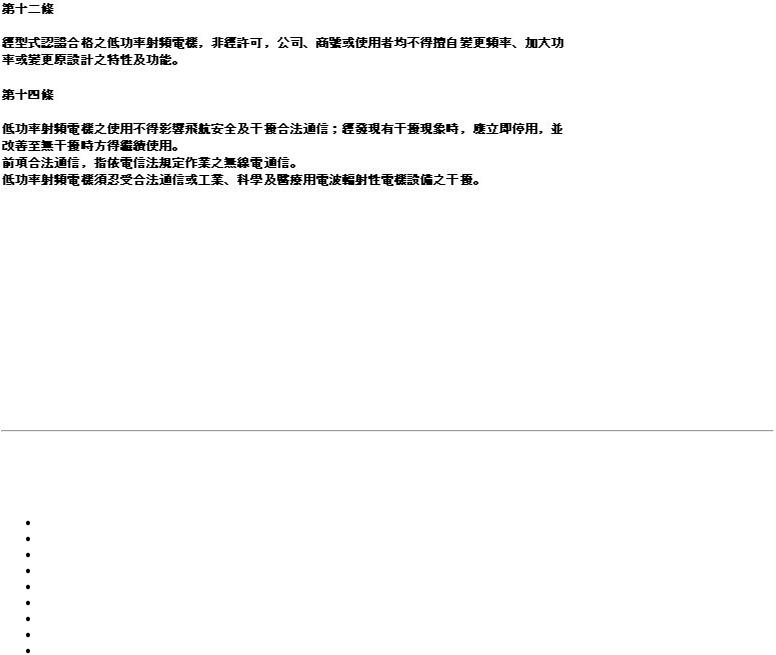Intel 2200BNH, 2230BNH, 2200BNHU, 2230BNHU User Manual

Intel® Wireless Adapter Information Guide
Supported wireless adapters:
Intel® Centrino® Wireless-N 100 (Available for Windows* 7 only)
Intel® Centrino® Wireless-N 105 (Available for Windows* 7 only)
Intel® Centrino® Wireless-N 130 (Available for Windows* 7 only)
Intel® Centrino® Wireless-N 135 (Available for Windows* 7 only)
Intel® WiFi Link 1000
Intel® Centrino® Wireless-N 1030
Intel® Centrino® Wireless-N 2200 (Available for Windows* 7 only)
Intel® Centrino® Wireless-N 2230 (Available for Windows* 7 only)
Intel® Centrino® Wireless-N + WiMAX 6150
Intel® Centrino® Advanced-N 6200
Intel® Centrino® Advanced-N 6205
Intel® Centrino® Advanced-N 6230
Intel® Centrino® Advanced-N 6235 (Not available for Windows Vista)
Intel® Centrino® Advanced-N + WiMAX 6250
Intel® Centrino® Ultimate-N 6300
With your WiFi network card, you can access WiFi networks, share files or printers, or even share your Internet connection. All of these features can be explored using a WiFi network in your home or office. This WiFi network solution is designed for both home and business use. Additional users and features can be added as your networking needs grow and change.
This guide contains basic information about Intel adapters. It includes information about several adapter properties that you can set to control and enhance the performance of your adapter with your particular wireless network and environment. Intel® wireless adapters enable fast connectivity without wires for desktop and notebook PCs.
Adapter Settings
Regulatory Information
Specifications
Important Information
Support
Warranty
Glossary
Depending on the model of your Intel WiFi adapter, your adapter is compatible with 802.11a, 802.11b, 802.11g, and 802.11n (draft 2.0) wireless standards. Operating at 5 GHz or 2.4 GHz frequency at data rates of up to 450 Mbps, you can now connect your computer to existing high-speed networks that use multiple access points within large or small environments. Your WiFi adapter maintains automatic data rate control according to the access point location and signal strength to achieve the fastest possible connection. All of your wireless network connections are easily managed by the WiFi connection utility. Profiles that are set up through the WiFi connection utility provide enhanced security measures with 802.1X network authentication.
Information in this document is subject to change without notice.
© 2004–2011 Intel Corporation. All rights reserved. Intel Corporation, 5200 N.E. Elam Young Parkway, Hillsboro, OR 97124-6497 USA
The copying or reproducing of any material in this document in any manner whatsoever without the written permission of Intel Corporation is strictly forbidden. Intel® is a trademark or registered trademark of Intel Corporation or its subsidiaries in the United States and other countries. Other trademarks and trade names may be used in this document to refer to either the entities claiming the marks and names or their products. Intel disclaims any proprietary interest in trademarks and trade names other than its own. Microsoft and Windows are registered trademarks of Microsoft Corporation. Windows Vista is either a registered trademark or trademark of Microsoft Corporation in the United States and/or other countries.
*Other names and brands may be claimed as the property of others.

Intel Corporation assumes no responsibility for errors or omissions in this document. Nor does Intel make any commitment to update the information contained herein.
"IMPORTANT NOTICE FOR ALL USERS OR DISTRIBUTORS:
Intel wireless LAN adapters are engineered, manufactured, tested, and quality checked to ensure that they meet all necessary local and governmental regulatory agency requirements for the regions that they are designated and/or marked to ship into. Because wireless LANs are generally unlicensed devices that share spectrum with radars, satellites, and other licensed and unlicensed devices, it is sometimes necessary to dynamically detect, avoid, and limit usage to avoid interference with these devices. In many instances Intel is required to provide test data to prove regional and local compliance to regional and governmental regulations before certification or approval to use the product is granted. Intel's wireless LAN's EEPROM, firmware, and software driver are designed to carefully control parameters that affect radio operation and to ensure electromagnetic compliance (EMC). These parameters include, without limitation, RF power, spectrum usage, channel scanning, and human exposure.
For these reasons Intel cannot permit any manipulation by third parties of the software provided in binary format with the wireless LAN adapters (e.g., the EEPROM and firmware). Furthermore, if you use any patches, utilities, or code with the Intel wireless LAN adapters that have been manipulated by an unauthorized party (i.e., patches, utilities, or code (including open source code modifications) which have not been validated by Intel), (i) you will be solely responsible for ensuring the regulatory compliance of the products, (ii) Intel will bear no liability, under any theory of liability for any issues associated with the modified products, including without limitation, claims under the warranty and/or issues arising from regulatory non-compliance, and (iii) Intel will not provide or be required to assist in providing support to any third parties for such modified products.
Note: Many regulatory agencies consider Wireless LAN adapters to be "modules", and accordingly, condition system-level regulatory approval upon receipt and review of test data documenting that the antennas and system configuration do not cause the EMC and radio operation to be non-compliant."
September 7, 2011

Back to Contents
Adapter Settings
The Advanced tab displays the device properties for the WiFi adapter installed on your computer.
How to Access
At the Intel® PROSet/Wireless WiFi Connection Utility, Advanced Menu click Adapter Settings. Select the
Advanced tab.
WiFi Adapter Settings Description
Name |
|
Description |
|
|
|
|
|
|
802.11n |
|
Set high throughput channel width to maximize performance. Set the channel width to Auto or |
Channel Width |
|
20MHz. Use 20MHz if 802.11n channels are restricted. This setting applies to 802.11n capable |
(2.4 GHz) |
|
adapters only. |
|
|
NOTE: This setting does not apply to the Intel® Wireless WiFi Link 4965AGN (uses 20 MHz |
|
|
channel width only). |
|
|
|
802.11n Channel Width (5.2 GHz)
802.11n Mode
Ad Hoc
Channel
Ad Hoc Power
Management
Set high throughput channel width to maximize performance. Set the channel width to Auto or 20MHz. Use 20MHz if 802.11n channels are restricted. This setting applies to 802.11n capable adapters only.
NOTE: This setting does not apply to the following adapters:
Intel® WiFi Link 1000
Intel® Wireless WiFi Link 4965AGN
The 802.11n standard builds on previous 802.11 standards by adding multiple-input multipleoutput (MIMO). MIMO increases data throughput to improve transfer rate. Select Enabled or Disabled to set the 802.11n mode of the WiFi adapter. Enabled is the default setting. This setting applies to 802.11n capable adapters only.
NOTE: To achieve transfer rates greater than 54 Mbps on 802.11n connections, WPA2*-AES security must be selected. No security (None) can be selected to enable network setup and troubleshooting.
An administrator can enable or disable support for high throughput mode to reduce powerconsumption or conflicts with other bands or compatibility issues.
Unless the other computers in the ad hoc network use a different channel from the default channel, there is no need to change the channel.
Value: Select the permitted operating channel from the list.
802.11b/g: Select this option when 802.11b and 802.11g (2.4 GHz) ad hoc band frequency is used.
802.11a: Select this option when 802.11a (5 GHz) ad hoc band frequency is used. This setting does not apply to the Intel® WiFi Link 1000 adapter.
NOTE: When an 802.11a channel is not displayed, initiating ad hoc networks is not supported for 802.11a channels.
Set power saving features for device to device (ad hoc) networks.
Disable: Select when connecting to ad hoc networks that contain stations that do not support ad hoc power management
Maximum Power Savings: Select to optimize battery life.

Ad Hoc QoS
Mode
Fat Channel
Intolerant
Mixed mode protection
Noisy Environment: Select to optimize performance or connecting with multiple clients.
Quality of Service (QoS) control in ad hoc networks. QoS provides prioritization of traffic from the access point over a wireless LAN based on traffic classification. WMM (Wi-Fi Multimedia) is the QoS certification of the Wi-Fi Alliance (WFA). When WMM is enabled, the WiFi adapter uses WMM to support priority tagging and queuing capabilities for Wi-Fi networks.
WMM Enabled (Default)
WMM Disabled
This setting communicates to surrounding networks that this WiFi adapter is not tolerant of 40MHz channels in the 2.4GHz band. The default setting is for this to be turned off (disabled), so that the adapter does not send this notification.
NOTE: This setting does not apply to the following adapters:
Intel® Wireless WiFi Link 4965AG_
Intel® PRO/Wireless 3945ABG Network Connection
Use to avoid data collisions in a mixed 802.11b and 802.11g environment. Request to Send/Clear to Send (RTS/CTS) should be used in an environment where clients may not hear each other. CTS-to-self can be used to gain more throughput in an environment where clients are in close proximity and can hear each other.
Power
Management
Roaming
Aggressiveness
Throughput
Enhancement
Lets you select a balance between power consumption and WiFi adapter performance. The WiFi adapter power settings slider sets a balance between the computer's power source and the battery.
Use default value: (Default) Power settings are based on the computer's power source. Manual: Adjust the slider for the desired setting. Use the lowest setting for maximum battery life. Use the highest setting for maximum performance.
NOTE: Power consumption savings vary based on Network (Infrastructure) settings.
This setting lets you define how aggressively your wireless client roams to improve connection to an access point.
Default: Balanced setting between not roaming and performance.
Lowest: Your wireless client will not roam. Only significant link quality degradation causes it to roam to another access point.
Highest: Your wireless client continuously tracks the link quality. If any degradation occurs, it tries to find and roam to a better access point.
Changes the value of the Packet Burst Control.
Enable: Select to enable throughput enhancement.
Disable: (Default) Select to disable throughput enhancement.
Transmit |
|
Default Setting: Highest power setting. |
Power |
|
Lowest: Minimum Coverage: Set the adapter to the lowest transmit power. Enables you to |
|
|
|
|
|
expand the number of coverage areas or confine a coverage area. Reduces the coverage area |
|
|
in high traffic areas to improve overall transmission quality and avoids congestion and |
|
|
interference with other devices. |
|
|
Highest: Maximum Coverage: Set the adapter to a maximum transmit power level. Select |
|
|
for maximum performance and range in environments with limited additional WiFi radio |
|
|
devices. |
|
|
NOTE: The optimal setting is for a user to always set the transmit power at the lowest |
|
|
possible level that is still compatible with the quality of their communication. This allows the |
|
|
maximum number of wireless devices to operate in dense areas and reduce interference with |
|
|
other devices that it shares the same radio spectrum with. |

NOTE: This setting takes effect when either Network (Infrastructure) or Device to Device (ad hoc) mode is used.
Wireless Mode Select which mode to use for connection to a wireless network:
|
|
802.11a only: Connect the wireless WiFi adapter to 802.11a networks only. Not |
|
|
applicable for all adapters. |
|
|
802.11b only: Connect the wireless WiFi adapter to 802.11b networks only. Not |
|
|
applicable for all adapters. |
|
|
802.11g only: Connect the wireless WiFi adapter to 802.11g networks only. |
|
|
802.11a and 802.11g: Connect the WiFi adapter to 802.11a and 802.11g networks |
|
|
only. Not applicable for all adapters. |
|
|
802.11b and 802.11g: Connect the WiFi adapter to 802.11b and 802.11g networks |
|
|
only. Not applicable for all adapters. |
|
|
802.11a, 802.11b, and 802.11g: (Default) - Connect to either 802.11a, 802.11b or |
|
|
802.11g wireless networks. Not applicable for all adapters. |
|
|
NOTE: These wireless modes (Modulation type) determine the discovered access points |
|
|
displayed in the WiFi Networks list |
|
|
|
|
|
|
OK |
|
Saves settings and returns to the previous page. |
|
|
|
|
|
|
Cancel |
|
Closes and cancels any changes. |
|
|
|
Back to Top
Back to Contents
Trademarks and Disclaimers

Back to Contents
Regulatory Information
NOTE: Due to the evolving state of regulations and standards in the wireless LAN field (IEEE 802.11 and similar standards), the information provided herein is subject to change. Intel Corporation assumes no responsibility for errors or omissions in this document.
Intel® Centrino® Wireless-N 100
Intel® Centrino® Wireless-N 105
Intel® Centrino® Wireless-N 130
Intel® Centrino® Wireless-N 135
Intel® WiFi Link 1000
Intel® Centrino® Wireless-N 1030
Intel® Centrino® Wireless-N 2200
Intel® Centrino® Wireless-N 2230
Intel® Centrino® Wireless-N + WiMAX 6150
Intel® Centrino® Advanced-N 6200
Intel® Centrino® Advanced-N 6205
Intel® Centrino® Advanced-N 6230
Intel® Centrino® Advanced-N 6235
Intel® Centrino® Advanced-N + WiMAX 6250
Intel® Centrino® Ultimate-N 6300
Intel WiFi/WiMAX Wireless Adapters
Information in this section supports the following wireless adapters:
Intel® Centrino® Wireless-N + WiMAX 6150
Intel® Centrino® Advanced-N + WiMAX 6250
See Specifications for complete wireless adapter specifications.
NOTE: In this section, all references to the "wireless adapter" refer to all adapters listed above.
The following information is provided:
Information for the User
Regulatory Information
Information for the User
Safety Notices
USA—FCC and FAA
The FCC with its action in ET Docket 96-8 has adopted a safety standard for human exposure to radio frequency (RF) electromagnetic energy emitted by FCC certified equipment. The wireless adapter meets the Human Exposure limits found in OET Bulletin 65, supplement C, 2001, and ANSI/IEEE C95.1, 1992. Proper operation of this radio according to the instructions found in this manual will result in exposure substantially below the FCC’s recommended limits.
The following safety precautions should be observed:
Do not touch or move antenna while the unit is transmitting or receiving.
Do not hold any component containing the radio such that the antenna is very close or touching any exposed parts of the body, especially the face or eyes, while transmitting.
Do not operate the radio or attempt to transmit data unless the antenna is connected; this behavior may

cause damage to the radio. Use in specific environments:
The use of wireless adapters in hazardous locations is limited by the constraints posed by the safety directors of such environments.
The use of wireless adapters on airplanes is governed by the Federal Aviation Administration (FAA). The use of wireless adapters in hospitals is restricted to the limits set forth by each hospital.
Antenna Use
In order to comply with FCC RF exposure limits, low gain integrated antennas should be located at a minimum distance of 20cm (8 inches) or more from the body of all persons or at a minimum distance as specified by the FCC module grant conditions. FCC grants can be viewed from the FCC Equipment Authorization website at https://fjallfoss.fcc.gov/oetcf/eas/reports/GenericSearch.cfm by entering the FCC ID printed on the module label.
Explosive Device Proximity Warning
 Warning: Do not operate a portable transmitter (including this wireless adapter) near unshielded blasting caps or in an explosive environment unless the transmitter has been modified to be qualified for such use.
Warning: Do not operate a portable transmitter (including this wireless adapter) near unshielded blasting caps or in an explosive environment unless the transmitter has been modified to be qualified for such use.
Antenna Warnings
 Warning: To comply with the FCC and ANSI C95.1 RF exposure limits, it is recommended that for the wireless adapter installed in a desktop or portable computer, the antenna for this wireless adapter to be installed so as to provide a separation distance of at least 20 cm (8 inches) from all persons or at the minimum distance as specified by the module grant conditions. FCC grants can be viewed from the FCC Equipment Authorization website at https://fjallfoss.fcc.gov/oetcf/eas/reports/GenericSearch.cfm by entering the FCC ID printed on the module label.
Warning: To comply with the FCC and ANSI C95.1 RF exposure limits, it is recommended that for the wireless adapter installed in a desktop or portable computer, the antenna for this wireless adapter to be installed so as to provide a separation distance of at least 20 cm (8 inches) from all persons or at the minimum distance as specified by the module grant conditions. FCC grants can be viewed from the FCC Equipment Authorization website at https://fjallfoss.fcc.gov/oetcf/eas/reports/GenericSearch.cfm by entering the FCC ID printed on the module label.
 Warning: The wireless adapter is not designed for use with high-gain directional antennas.
Warning: The wireless adapter is not designed for use with high-gain directional antennas.
Use On Aircraft Caution
 Caution: Regulations of the FCC and FAA prohibit airborne operation of radio-frequency wireless devices (wireless adapters) because their signals could interfere with critical aircraft instruments.
Caution: Regulations of the FCC and FAA prohibit airborne operation of radio-frequency wireless devices (wireless adapters) because their signals could interfere with critical aircraft instruments.
Other Wireless Devices
Safety Notices for Other Devices in the Wireless Network: See the documentation supplied with wireless adapters or other devices in the wireless network.
Local Restrictions on 802.11a, 802.11b, 802.11g, 802.11n, and 802.16e Radio Usage
 Caution: Due to the fact that the frequencies used by 802.11a, 802.11b, 802.11g, 802.11n, and 802.16e wireless LAN devices may not yet be harmonized in all countries, 802.11a, 802.11b, 802.11g, 802.11n, and 802.16e products are designed for use only in specific countries, and are not allowed to be operated in countries other than those of designated use. As a user of these products, you are responsible for ensuring that the products are used only in the countries for which they were intended and for verifying that they are configured with the correct selection of frequency and channel for the country of use. The device transmit power control (TPC) interface is part of the Intel® PROSet/Wireless WiFi Connection Utility Software. Operational restrictions for Equivalent Isotropic Radiated Power (EIRP) are provided by the system manufacturer. Any deviation from the permissible power and frequency settings for the country of use is an infringement of national law and may be punished as such.
Caution: Due to the fact that the frequencies used by 802.11a, 802.11b, 802.11g, 802.11n, and 802.16e wireless LAN devices may not yet be harmonized in all countries, 802.11a, 802.11b, 802.11g, 802.11n, and 802.16e products are designed for use only in specific countries, and are not allowed to be operated in countries other than those of designated use. As a user of these products, you are responsible for ensuring that the products are used only in the countries for which they were intended and for verifying that they are configured with the correct selection of frequency and channel for the country of use. The device transmit power control (TPC) interface is part of the Intel® PROSet/Wireless WiFi Connection Utility Software. Operational restrictions for Equivalent Isotropic Radiated Power (EIRP) are provided by the system manufacturer. Any deviation from the permissible power and frequency settings for the country of use is an infringement of national law and may be punished as such.
For country-specific information, see the additional compliance information supplied with the product.
Wireless Interoperability
The wireless adapter is designed to be interoperable with other wireless LAN products that are based on direct

sequence spread spectrum (DSSS) radio technology and to comply with the following standards:
IEEE Std. 802.11b compliant Standard on Wireless LAN
IEEE Std. 802.11g compliant Standard on Wireless LAN
IEEE Std. 802.11a compliant Standard on Wireless LAN
IEEE Std. 802.11n draft 2.0 compliant on Wireless LAN
IEEE 802.16e-2005 Wave 2 compliant
Wireless Fidelity certification, as defined by the Wi-Fi Alliance
WiMAX certification as defined by the WiMAX Forum
The Wireless Adapter and Your Health
The wireless adapter, like other radio devices, emits radio frequency electromagnetic energy. The level of energy emitted by the wireless adapter, however, is less than the electromagnetic energy emitted by other wireless devices such as mobile phones. The wireless adapter operates within the guidelines found in radio frequency safety standards and recommendations. These standards and recommendations reflect the consensus of the scientific community and result from deliberations of panels and committees of scientists who continually review and interpret the extensive research literature. In some situations or environments, the use of the wireless adapter may be restricted by the proprietor of the building or responsible representatives of the applicable organization. Examples of such situations may include:
Using the wireless adapter on board airplanes, or
Using the wireless adapter in any other environment where the risk of interference with other devices or services is perceived or identified as being harmful.
If you are uncertain of the policy that applies to the use of wireless adapters in a specific organization or environment (an airport, for example), you are encouraged to ask for authorization to use the adapter before you turn it on.
WEEE
Regulatory Information
Information for the OEMs and Integrators
The following statement must be included with all versions of this document supplied to an OEM or integrator, but should not be distributed to the end user.
This device is intended for OEM integrators only.
Please see the full Grant of Equipment document for other restrictions.
This device must be operated and used with a locally approved access point.
Information To Be Supplied to the End User by the OEM or Integrator
The following regulatory and safety notices must be published in documentation supplied to the end user of the product or system incorporating the Intel® wireless adapter, in compliance with local regulations. Host system must be labeled with "Contains FCC ID: XXXXXXXX", FCC ID displayed on label.
The Intel® wireless adapter must be installed and used in strict accordance with the manufacturer's instructions as described in the user documentation that comes with the product. Intel Corporation is not responsible for any radio or television interference caused by unauthorized modification of the devices included with the wireless adapter kit or the substitution or attachment of connecting cables and equipment other than that specified by Intel Corporation. The correction of interference caused by such unauthorized modification, substitution or attachment is

the responsibility of the user. Intel Corporation and authorized resellers or distributors are not liable for any damage or violation of government regulations that may arise from the user failing to comply with these guidelines.
Local Restriction of 802.11a, 802.11b, 802.11g, and 802.11n Radio Usage
The following statement on local restrictions must be published as part of the compliance documentation for all 802.11a, 802.11b, 802.11g and 802.11n products.
 Caution: Due to the fact that the frequencies used by 802.11a, 802.11b, 802.11g, 802.11n, and 802.16e wireless LAN devices may not yet be harmonized in all countries, 802.11a, 802.11b, 802.11g, 802.11n, and 802.16e products are designed for use only in specific countries, and are not allowed to be operated in countries other than those of designated use. As a user of these products, you are responsible for ensuring that the products are used only in the countries for which they were intended and for verifying that they are configured with the correct selection of frequency and channel for the country of use. Any deviation from the permissible power and frequency settings for the country of use is an infringement of national law and may be punished as such.
Caution: Due to the fact that the frequencies used by 802.11a, 802.11b, 802.11g, 802.11n, and 802.16e wireless LAN devices may not yet be harmonized in all countries, 802.11a, 802.11b, 802.11g, 802.11n, and 802.16e products are designed for use only in specific countries, and are not allowed to be operated in countries other than those of designated use. As a user of these products, you are responsible for ensuring that the products are used only in the countries for which they were intended and for verifying that they are configured with the correct selection of frequency and channel for the country of use. Any deviation from the permissible power and frequency settings for the country of use is an infringement of national law and may be punished as such.
FCC Radio Frequency Interference Requirements
This wireless adapter is restricted to indoor use due to its operation in the 5.15 to 5.25 GHz frequency range. FCC requires this wireless adapter to be used indoors for the frequency range 5.15 to 5.25 GHz to reduce the potential for harmful interference to co-channel mobile satellite systems. High power radars are allocated as primary users of the 5.25 to 5.35 GHz and 5.65 to 5.85 GHz bands. These radar stations can cause interference with and /or damage this device.
This wireless adapter is intended for OEM integrators only.
This wireless adapter cannot be co-located with any other transmitter unless approved by the FCC.
USA—Federal Communications Commission (FCC)
This wireless adapter complies with Part 15 of the FCC Rules. Operation of the device is subject to the following two conditions:
This device may not cause harmful interference.
This device must accept any interference that may cause undesired operation.
NOTE: The radiated output power of the adapter is far below the FCC radio frequency exposure limits. Nevertheless, the adapter should be used in such a manner that the potential for human contact during normal operation is minimized. To avoid the possibility of exceeding the FCC radio frequency exposure limits, you should keep a distance of at least 20cm between you (or any other person in the vicinity), or the minimum separation distance as specified by the FCC grant conditions, and the antenna that is built into the computer. Details of the authorized configurations can be found at http://www.fcc.gov/oet/ea/ by entering the FCC ID number on the device.
Interference Statement
This wireless adapter has been tested and found to comply with the limits for a Class B digital device, pursuant to Part 15 of the FCC Rules. These limits are designed to provide reasonable protection against harmful interference in a residential installation. This wireless adapter generates, uses, and can radiate radio frequency energy. If the wireless adapter is not installed and used in accordance with the instructions, the wireless adapter may cause harmful interference to radio communications. There is no guarantee, however, that such interference will not occur in a particular installation. If this wireless adapter does cause harmful interference to radio or television reception (which can be determined by turning the equipment off and on), the user is encouraged to try to correct the interference by taking one or more of the following measures:
Reorient or relocate the receiving antenna of the equipment experiencing the interference.
Increase the distance between the wireless adapter and the equipment experiencing the interference. Connect the computer with the wireless adapter to an outlet on a circuit different from that to which the equipment experiencing the interference is connected.

Consult the dealer or an experienced radio/TV technician for help.
NOTE: The adapter must be installed and used in strict accordance with the manufacturer's instructions as described in the user documentation that comes with the product. Any other installation or use will violate FCC Part 15 regulations.
Underwriters Laboratories Inc. (UL) Regulatory Warning
For use in (or with) UL Listed personal computers or compatible.
Low Halogen
Applies only to brominated and chlorinated flame retardants (BFRs/CFRs) and PVC in the final product. Intel components as well as purchased components on the finished assembly meet JS-709 requirements, and the PCB / substrate meet IEC 61249-2-21 requirements. The replacement of halogenated flame retardants and/or PVC may not be better for the environment.
Taiwan
Radio Approvals
To determine whether you are allowed to use your wireless network device in a specific country, please check to see if the radio type number that is printed on the identification label of your device is listed in the manufacturer's OEM Regulatory Guidance document.
Regulatory Markings
A list of required regulatory markings can be found on the web at http://www.intel.com/support/wireless/wlan/
To find the regulatory information for your adapter, click on the link for your adapter. Then click Additional Information > Regulatory Documents.
Intel WiFi Adapters, 802.11n Compliant
The information in this section applies to the following products:
Intel® Centrino® Wireless-N 100
Intel® Centrino® Wireless-N 105
Intel® Centrino® Wireless-N 130
Intel® Centrino® Wireless-N 135
Intel® WiFi Link 1000
Intel® Centrino® Wireless-N 1030
Intel® Centrino® Wireless-N 2200
Intel® Centrino® Wireless-N 2230
Intel® Centrino® Advanced-N 6200

Intel® Centrino® Advanced-N 6205
Intel® Centrino® Advanced-N 6230
Intel® Centrino® Advanced-N 6235
Intel® Centrino® Ultimate-N 6300
See Specifications for wireless adapter specifications.
NOTE: In this section, all references to the "wireless adapter" refer to all adapters listed above.
The following information is provided:
Information for the User
Regulatory Information
Information for the User
Safety Notices
USA—FCC and FAA
The FCC with its action in ET Docket 96-8 has adopted a safety standard for human exposure to radio frequency (RF) electromagnetic energy emitted by FCC certified equipment. The wireless adapter meets the Human Exposure limits found in OET Bulletin 65, supplement C, 2001, and ANSI/IEEE C95.1, 1992. Proper operation of this radio according to the instructions found in this manual will result in exposure substantially below the FCC’s recommended limits.
The following safety precautions should be observed:
Do not touch or move antenna while the unit is transmitting or receiving.
Do not hold any component containing the radio such that the antenna is very close or touching any exposed parts of the body, especially the face or eyes, while transmitting.
Do not operate the radio or attempt to transmit data unless the antenna is connected; this behavior may cause damage to the radio.
Use in specific environments:
The use of wireless adapters in hazardous locations is limited by the constraints posed by the safety directors of such environments.
The use of wireless adapters on airplanes is governed by the Federal Aviation Administration (FAA). The use of wireless adapters in hospitals is restricted to the limits set forth by each hospital.
Antenna Use
In order to comply with FCC RF exposure limits, low gain integrated antennas should be located at a minimum distance of 20cm (8 inches) or more from the body of all persons or at a minimum distance as specified by the FCC module grant conditions. FCC grants can be viewed from the FCC Equipment Authorization website at https://fjallfoss.fcc.gov/oetcf/eas/reports/GenericSearch.cfm by entering the FCC ID printed on the module label.
Explosive Device Proximity Warning
 Warning: Do not operate a portable transmitter (including this wireless adapter) near unshielded blasting caps or in an explosive environment unless the transmitter has been modified to be qualified for such use.
Warning: Do not operate a portable transmitter (including this wireless adapter) near unshielded blasting caps or in an explosive environment unless the transmitter has been modified to be qualified for such use.
Antenna Warnings
 Warning: To comply with the FCC and ANSI C95.1 RF exposure limits, it is recommended that for the wireless adapter installed in a desktop or portable computer, the antenna for this wireless adapter to be installed so as to provide a separation distance of at least 20 cm (8 inches) from all persons or at the minimum distance as specified by the module grant conditions. FCC grants can be viewed from the FCC Equipment Authorization website at https://fjallfoss.fcc.gov/oetcf/eas/reports/GenericSearch.cfm by entering the FCC ID printed on the module label.
Warning: To comply with the FCC and ANSI C95.1 RF exposure limits, it is recommended that for the wireless adapter installed in a desktop or portable computer, the antenna for this wireless adapter to be installed so as to provide a separation distance of at least 20 cm (8 inches) from all persons or at the minimum distance as specified by the module grant conditions. FCC grants can be viewed from the FCC Equipment Authorization website at https://fjallfoss.fcc.gov/oetcf/eas/reports/GenericSearch.cfm by entering the FCC ID printed on the module label.

 Warning: The wireless adapter is not designed for use with high-gain directional antennas.
Warning: The wireless adapter is not designed for use with high-gain directional antennas.
Use On Aircraft Caution
 Caution: Regulations of the FCC and FAA prohibit airborne operation of radio-frequency wireless devices (wireless adapters) because their signals could interfere with critical aircraft instruments.
Caution: Regulations of the FCC and FAA prohibit airborne operation of radio-frequency wireless devices (wireless adapters) because their signals could interfere with critical aircraft instruments.
Other Wireless Devices
Safety Notices for Other Devices in the Wireless Network: See the documentation supplied with wireless adapters or other devices in the wireless network.
Local Restrictions on 802.11a, 802.11b, 802.11g and 802.11n Radio Usage
 Caution: Due to the fact that the frequencies used by 802.11a, 802.11b, 802.11g and 802.11n wireless LAN devices may not yet be harmonized in all countries, 802.11a, 802.11b, 802.11g and 802.11n products are designed for use only in specific countries, and are not allowed to be operated in countries other than those of designated use. As a user of these products, you are responsible for ensuring that the products are used only in the countries for which they were intended and for verifying that they are configured with the correct selection of frequency and channel for the country of use. The device transmit power control (TPC) interface is part of the Intel® PROSet/Wireless WiFi Connection Utility Software. Operational restrictions for Equivalent Isotropic Radiated Power (EIRP) are provided by the system manufacturer. Any deviation from the permissible power and frequency settings for the country of use is an infringement of national law and may be punished as such.
Caution: Due to the fact that the frequencies used by 802.11a, 802.11b, 802.11g and 802.11n wireless LAN devices may not yet be harmonized in all countries, 802.11a, 802.11b, 802.11g and 802.11n products are designed for use only in specific countries, and are not allowed to be operated in countries other than those of designated use. As a user of these products, you are responsible for ensuring that the products are used only in the countries for which they were intended and for verifying that they are configured with the correct selection of frequency and channel for the country of use. The device transmit power control (TPC) interface is part of the Intel® PROSet/Wireless WiFi Connection Utility Software. Operational restrictions for Equivalent Isotropic Radiated Power (EIRP) are provided by the system manufacturer. Any deviation from the permissible power and frequency settings for the country of use is an infringement of national law and may be punished as such.
For country-specific information, see the additional compliance information supplied with the product.
Wireless Interoperability
The wireless adapter is designed to be interoperable with other wireless LAN products that are based on direct sequence spread spectrum (DSSS) radio technology and to comply with the following standards:
IEEE Std. 802.11b compliant Standard on Wireless LAN
IEEE Std. 802.11g compliant Standard on Wireless LAN
IEEE Std. 802.11a compliant Standard on Wireless LAN
IEEE Std. 802.11n draft 2.0 compliant on Wireless LAN
Wireless Fidelity certification, as defined by the Wi-Fi Alliance
The Wireless Adapter and Your Health
The wireless adapter, like other radio devices, emits radio frequency electromagnetic energy. The level of energy emitted by the wireless adapter, however, is less than the electromagnetic energy emitted by other wireless devices such as mobile phones. The wireless adapter operates within the guidelines found in radio frequency safety standards and recommendations. These standards and recommendations reflect the consensus of the scientific community and result from deliberations of panels and committees of scientists who continually review and interpret the extensive research literature. In some situations or environments, the use of the wireless adapter may be restricted by the proprietor of the building or responsible representatives of the applicable organization. Examples of such situations may include:
Using the wireless adapter on board airplanes, or
Using the wireless adapter in any other environment where the risk of interference with other devices or services is perceived or identified as being harmful.
If you are uncertain of the policy that applies to the use of wireless adapters in a specific organization or environment (an airport, for example), you are encouraged to ask for authorization to use the adapter before you turn it on.
WEEE
